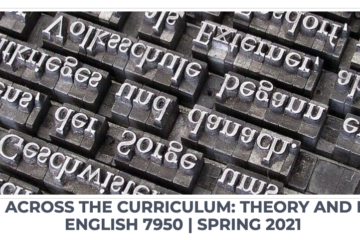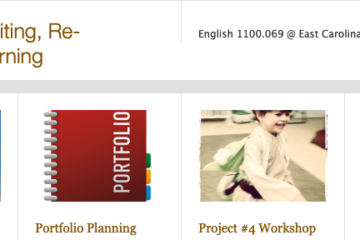One way to introduce this course, which is a new course being taught for the first time this semester, is to critique its name: LGBTQ+ Theories and Literatures. What does that even mean? Lesbian, gay, bisexual, transgender, queer (and more) theories and literatures — frankly, that seems an overwhelming bit of content for a course, especially a summer one. In creating the title for this course, the designers wrestled with how to be inclusive and clear around always evolving identities related to gender and sexuality, but in doing so, have linked together literatures that may or may not share all that much in common. Do we assume that gay men and lesbians have similar enough experiences of the world as to study their literatures together? What do we think will happen when we do? How do those assumptions shift when we think of bisexual writers and experiences, or those of trans, queer, or gender-nonconforming writers? Are we studying texts written by self-proclaimed (“out”) LGBTQ+ folks, or texts which focus on non-normative genders and sexuality? Is this about the writer or the text, or both? And can we do justice to that many different experiences in a single course, particularly during the summer? These questions become even more complex when we consider what roles theoretical and literary texts will play in the course.
I have taught different version of this course as “special topics” over the years, and each time, I have tried to focus it in a useful way. This summer, I have focused our reading around texts from the last 20 years that have been written by writers who represent multiply-marginalized (multi-marg) identities; therefore, I’m subtitling our summer course “Queer-of-Color Literatures.” Critics of queer theory have rightly noted how “white” that work has tended to be since the 1980s, and when my co-author John Pruitt and I were working on Approaches to Teaching LGBT Literature (2018) and Curricular Innovations: LGBTQ Literatures and the New English Studies (2019), one of the things that frustrated us was how overwhelmingly white the curricula for queer-themed courses still tended to be in the 21st century. The last twenty years, however, has produced some rich, complex, and diverse work in LGBTQ+ literatures, and I have chosen to feature texts this summer that explore the experiences of non-white, non-middle-class, and not-exclusively-US writers who identify as gay or lesbian. The texts I have selected represent a maturity in LGBTQ+ literatures: these texts do not center on “coming out” as the primary experience for the protagonists (though there are elements there of self-discovery); these texts do not require the protagonists to be happy at the end by embracing what Susan Stryker and Lisa Duggan have termed “homonormativity.” In fact, the writers we will study this summer explore the complex and difficult ways that various traumas tend to influence LGBTQ+ experiences, many of which are made more complex when we consider the layering of identities that exist for queer people of color. Exploring these texts, which are not immediately tied to the homonormative, allows us to ask a set of important questions around contemporary queer of color (QOC) writers.


